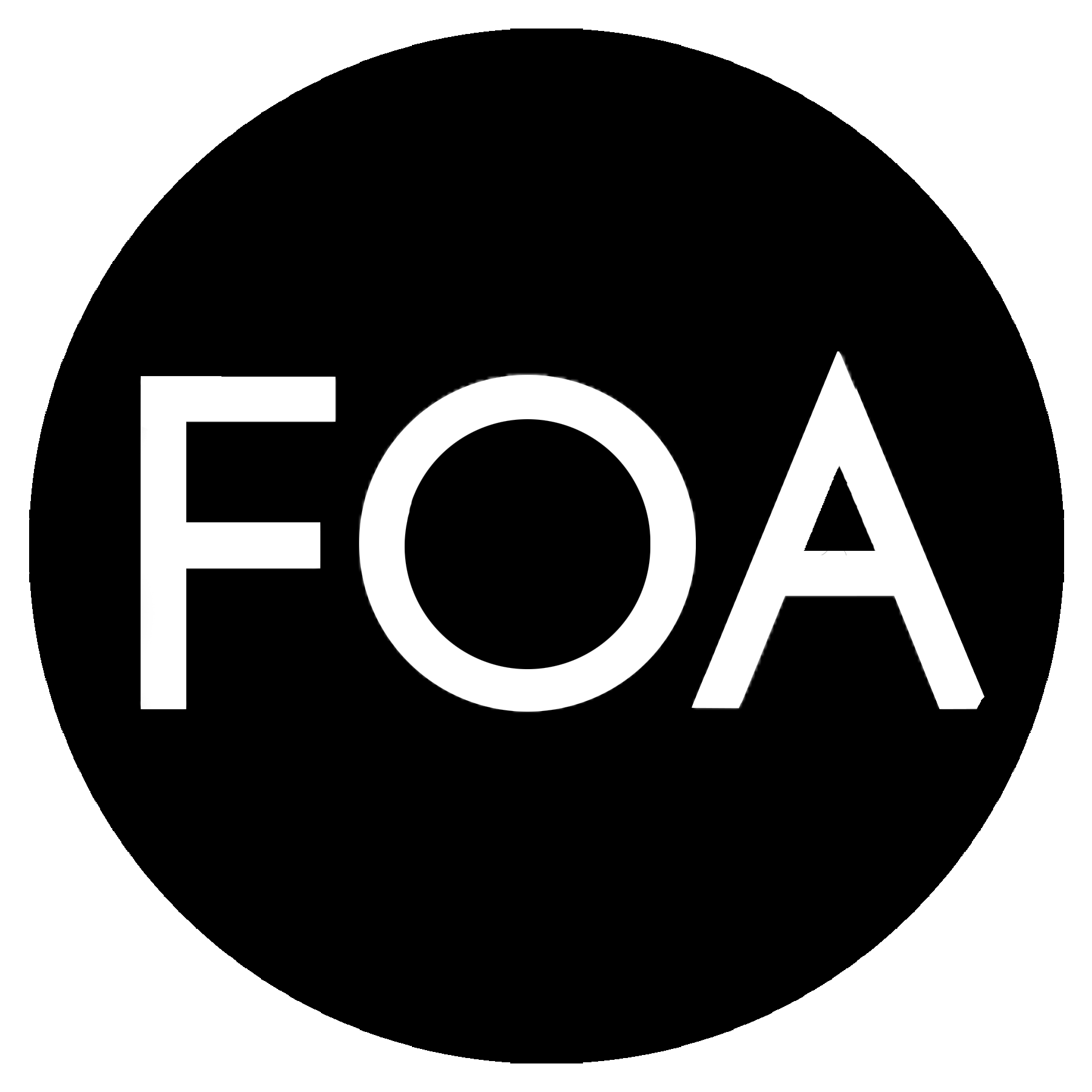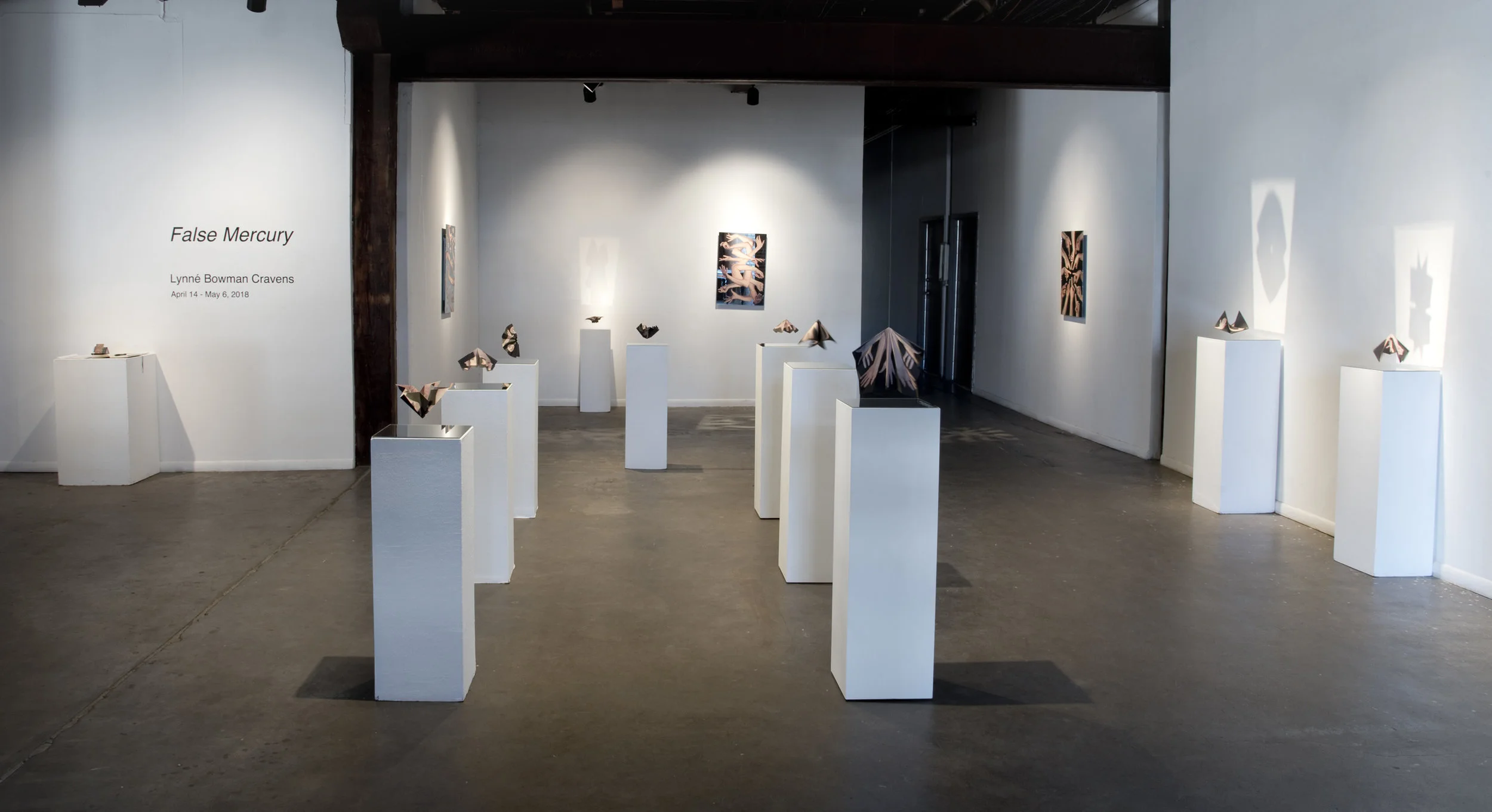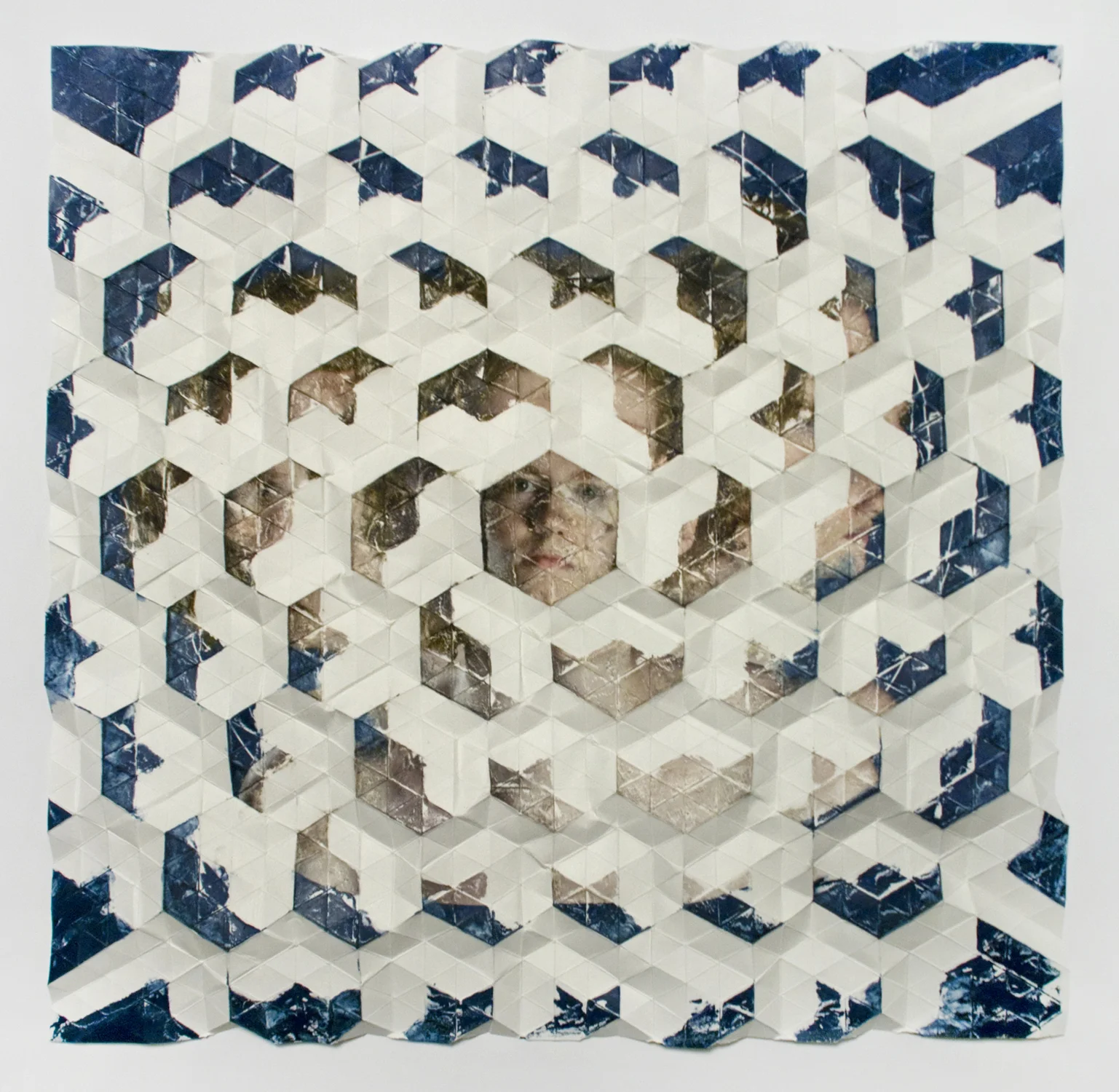Interview with Lynné Bowman Cravens
Lynné Bowman Cravens was born and raised in Austin, Texas. She attended St. Edward’s University, and received her BA in Photocommunications in 2009 and later attended graduate school at the University of North Texas where she received her MFA in Photography in 2015. Cravens currently resides in the DFW area, orking as the Gallery Manager at The Art Galleries at TCU Art Galleries. Her work was featured in the June 2016 issue of the British Origami Society’s international publication, and in the 4th annual Rising Stars exhibition at Turner House. Interview is between the artist and Justin Archer. Originally published in Volume 6.
JA: I would like to begin by asking a little bit about your background. What was it that drove you to become an artist, and more specifically a photographer?
LBC: Well I had an affinity for art from early on, I was always drawing. I was a pretty good student, but I didn’t enjoy anything as much as art. I didn’t have art classes in school until high school, so I learned everything from my mom who is a painter. When I was thirteen, my mom signed me up for a photography workshop at Laguna Gloria in Austin. I never thought much about photography prior to taking the class, but I was interested in trying something besides drawing and painting. It really opened my eyes to a new way of artmaking. After that I began casually making images using disposable cameras and my Dad’s old 35mm Olympus Omni 2.
When it came time to go to college, I was hoping to pursue fashion design. However, during my first semester at St. Edward’s University I took a Photo 1 class which was black and white film, film processing, and darkroom printing. As soon as I put my first print into the developer, I watched the image appear right before my eyes. It was like magic! I had never experienced something so moving in all my time creating up until that point. I felt I could create something uniquely my own utilizing photography, unlike many of the other artforms I had dabbled in. I knew from then on, I was not going to be pursuing drawing or fashion anymore.
JA: In 2007 you went to Xian, China to study photography. Can you talk about that experience?
LBC: I went to China for a study-abroad class while at St. Edward’s University, with Professor Joseph Vitone. It was an amazing experience! I think my favorite portions of the trip were the times we went out to small villages, away from the big cities. On an outing to Chenlu, my roommate and I went exploring on some hillside farms. We accidentally wandering into someone’s front yard. They did not speak any English and our Chinese was very poor; but they invited us inside, gave us tea, and we played with their new litter of puppies. The kindness of the people we encountered was so generous and lifechanging.
I’m not sure if the images I created while in China were anything special, but the experience made me think about the world in a different way. It also made me think about photography in a new way. I struggled to pull some sort of connecting thread between the images I was making, but I was eventually able to produce something that turned out fairly well. In our critiques, I saw how easy it was to exoticize people and places that are unfamiliar to us. It took some digging to move past those themes and find something truly interesting, while still respecting the culture we were immersed in. I won’t say I got it completely correct, but I could start to see how much better the images were when I was able to hit on something more real, topics that resonated more deeply with viewers. I think it is important to respect the people and environments you choose to photograph in. To try and get past the surface, down to something genuine and true to the subjects.
JA: In much of your work I see a significant overlap between sculpture and photography. How to these two processes inform one another in your studio practice?
Lynné Bowman Cravens
Januae, 2016
DASS transfer on paper
18 x 18 in.
LBC: I think first and foremost, I am a photographer. I am a bit hesitant to call myself a sculptor or what I do as sculpture. The concept and themes behind the work dictate if a piece will be sculptural. However, the nature of my work, being based in origami, lends itself to being 3D. Overall, I am more concerned with the final product and the experience the viewer will have standing in from of the pieces. I aim to disrupt how the viewer thinks of the photograph and how the 3D shapes are altered by adding photographs to the surfaces.
It's funny, I never thought of myself as being very good at thinking about work in the 3D realm. If you could see some of my ceramics work, you would get what I’m saying. But I remember going to a lecture by Ann Hamilton where she talked about her relationship to fabric and installation work. She said something along the lines of “Why can’t the thread be enough for you Ann?” I think about this often in my own relationship to photography. Why can’t the print be enough for me? Why must I always make it into an object? I’ve been trying to challenge myself to make 2D pieces again. However, I don’t think I’ll ever stop making sculptural pieces. It’s an interesting thing to balance.
JA: Identity is really important in your work, specifically your personal identity and experiences. Could you share about your processes of working autobiographically?
LBC: My choice to work autobiographically stems from the quote “write what you know”, or in my case make art about what you know. I don’t feel like I can be the authority on anyone else or the experiences they have, but I can speak to things I experience and use them to connect with my audience. While each person is unique and has a distinct set of circumstances in their lives, we do share commonalities. I think this is what draws people to my work. I love hearing people share their interactions with my work. It usually brings up memories or experiences that are quite similar to my own. While for me a series or piece might be about something very specific in my life, the objects can speak to a variety of emotions.
I think identity plays a large part in my work because I believe we are always trying to figure out who we are and how we fit into the grand scheme of things. I don’t know if we ever fully get there, I think life is a long process of figuring out who you are in many moments throughout time. While I feel secure in who I have become, I am also aware that my ideas of the world and who I am can and probably will change. It is important to continue to learn and grow, and I continually explore those changes and what I have learned in the art I make.
JA: What are some of the artists that have influenced you the most throughout your career?
LBC: Oh gosh, I always dread this question. My mom has been teaching art history since I was little, so I grew up surrounded by all styles and eras throughout art history. It makes it hard to choose. Though, when I was in high school I was really drawn to Egon Schiele, more specifically the way he drew hands. They are just so expressive and show so much about his subjects. I think my fascination came from the fact I was obsessed with hands. I drew a lot of them growing up, and I guess I’m still working with hands heavily, as is evident in the work I made for my recent solo exhibition, False Mercury.
Recently, my artist crushes have been Alma Haser, Rusty Scruby, and Sebastiaan Bremer. They all use and manipulate photography in their work, but I think we all utilize these techniques in different ways. I am always blown away by the work that Alma Haser is creating. The way she thinks about the imagery, physical form, and the concept behind the pieces is just so smart. She has a new series called Within 15 Minutes where she takes photographs of twins, prints them on puzzles, and alternates the pieces to create a combination of both people. It’s haunting and so well done. With Rusty Scruby, I really respect the difficulty and craft behind his pieces. He also uses origami in his work, and the pieces are insanely intricate and complicated. And lastly Sebastiaan Bremer. He takes appropriated photographs and draws new imaginary directly on the surface, creating a whole new composition. Bremer’s work is dreamy, mystical, and psychedelic. We have one of his pieces on display at Texas Christian University and I go visit it quite regularly. I always see something new in it. I really appreciate the way Bremer takes something that has already existed and creates a new image and a new way of looking at it.
JA: You’ve recently installed your solo exhibition, False Mercury, at 500X Gallery in Dallas. There were some new works that you created for False Mercury utilizing mirrors. What were some of the unique processes you used to see this exhibition fully realized?
LBC: Oh gosh! That was a very difficult show for me. I would say the initial idea for using mirrors in False Mercury started over a year ago. I was at Coupralux in Dallas, working on a project for my job at Texas Christian University. Coupralux had just gotten a new printer that has the ability to inkjet print on unusual surfaces. They had a few samples sitting around, one of which was a print on a mirror. I was immediately drawn to it but had no idea what I would do with it. I set this information aside for the time being. When I started visualizing what pieces I wanted to create for False Mercury, I kept coming back to those mirror samples, and thought about how I wanted to use mirrors in different ways. I like how the mirror creates a horizon into another dimension, showing a different side and perspective to objects. I was also interested in the fact that the viewer could see themselves in the mirror, essentially becoming part of the piece.
With this show, I ran into a lot of issues producing the work. I had never worked with mirror or glass in this way before, so I had a lot of research to do. I had a lot of trial and error, and realized I needed to get professional help to accomplish my goals. I decided to focus on what I really wanted to accomplish with this work and streamlined my efforts on getting those basic aspects correct. With the generous help from the staff at Coupralux, I was able to produce the inkjet printed mirrors for the show. It is important to know your limitations and turn to professionals when the time comes. I can be a bit stubborn, so it’s good to take a step back and reevaluate sometimes. I am excited about the work I created. I think it is a solid start to a new body of work.
Lynné Bowman Cravens
Grasping Loops, 2018
Inkjet print on paper, and mirror
6 1/4 x 6 1/4 x 1 in.
JA: You have been a member of 500X Gallery for the past 2 years I believe. What are some of the things you’ve enjoyed about belonging to an artist run cooperative gallery?
LBC: I am currently at the end of my second and final year as a member of 500X Gallery. It’s interesting because it is such a different business model for a gallery than most commercial galleries I am familiar with. I think I was a bit overwhelmed during my first six months. There are a lot of duties and responsibilities that the group needs to address and manage as a team. I feel really lucky that I have been a member alongside some really great artists and people. Working with a large group of artists can be like herding cats, but luckily my colleagues and I have found a good rhythm to accomplishing the goals of the gallery and our personal goals.
I think everyone joins 500X Gallery for their own reasons, there are a lot of benefits from becoming a member. I think the one that surprised me the most was the connection with previous members, artists who were members before me. You become connected to this local network of successful and experienced artists from the last 40 years! It made me feel even more connected to the artist community here in DFW. Almost everyone has some connection to 500X, either by being a member or having showed in the space. It’s really an interesting phenomenon.
JA: Do you have any new projects or exhibitions that you are currently working towards?
LBC: I am in store for a busy summer! I am a 2018 KAUNAS PHOTO STAR finalist. This means my work will be featured in either an international group exhibition or in a solo exhibition in Lithuania this fall. I will find out the result from the jury in September. I was also invited by the Bradbury Art Museum at Arkansas State University to participate in their Fall 2018 exhibition Body (Parts), opening in late August. My big summer plans consist of framing, packaging, and sending work off to these two exhibitions. I also have been looking forward to expanding on some of the projects I started over the last few years. I’m hoping that between framing and shipping artwork, I can carve out some time to tinker with some of my newer ideas.



